Posts Tagged ‘Rare coin’
The Last-Ever Peter Rabbit 50p!
In 2019, the last-ever Peter Rabbit 50p was officially released!
It would be hard to find someone who hadn’t heard of this naughty little rabbit. The central character of Beatrix Potter’s beloved children’s stories, Peter Rabbit has featured on many staple collectables.
Emma Noble’s design on this coin, which features an original illustration of Peter Rabbit by Beatrix Potter herself, perfectly captures Peter Rabbit’s cheeky personality, as he can be seen crawling under Mr. McGregor’s fence!
Where it all started
It was in 2016 that Peter Rabbit escaped from Mr. McGregor’s garden and made his first debut on United Kingdom coinage.
Issued to celebrate 150 years since the birth of renowned Children’s author, Beatrix Potter, this 50p changed coin collecting forever.
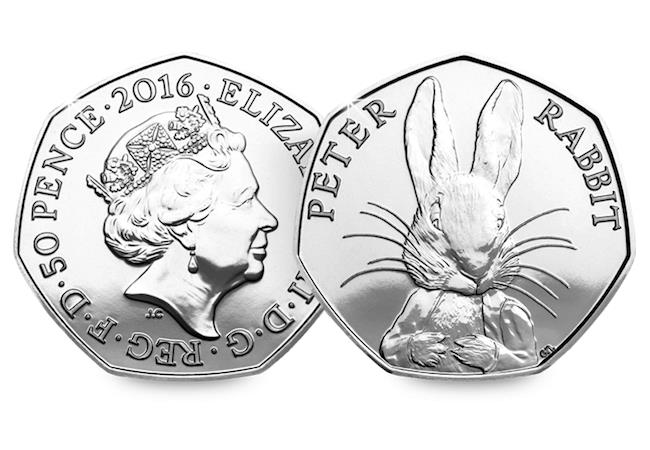
There were five Beatrix Potter 50ps issued in 2016, including the incredibly popular Jemima Puddle-Duck, which, for a long time, was considered the rarest Beatrix Potter coin in circulation. She was also joined by fellow characters Mrs. Tiggy-Winkle and Squirrel Nutkin.
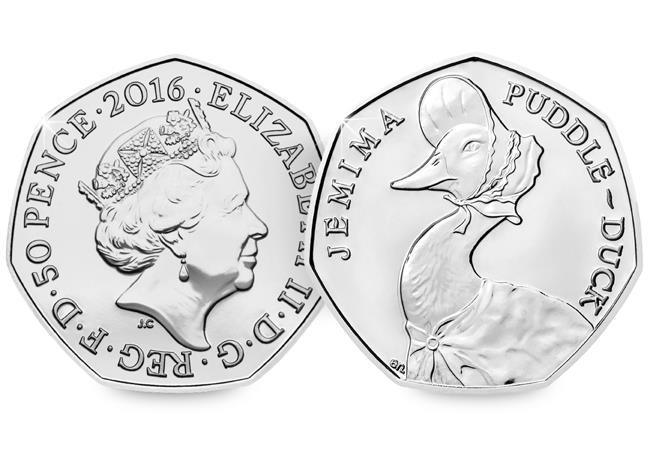
A very special 50p was issued the same year, celebrating Beatrix Potter herself and features her silhouette and emblem.
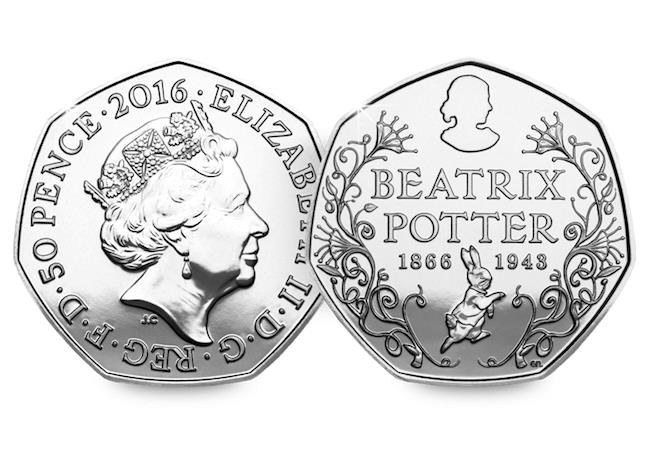
This series of coins continued into 2017, 2018 and 2019. Fifteen Beatrix Potter coins were issued between 2016-2019, each featuring one of Potter’s delightful characters, from Flopsy Bunny to Mrs. Tiggy-Winkle.

Peter Rabbit is the only character to feature more than once in the Beatrix Potter 50p series, with no less than 5 coins issued to celebrate the nation’s favourite little rabbit.
Sadly, Peter Rabbit’s 50p tale has now come to an end. It has been confirmed that the 2020 50p will be the very last UK Peter Rabbit 50p to be issued!
Which Beatrix Potter coins are the rarest?
To celebrate the release of thie final Peter Rabbit 50p, we’ve taken a look back at the mintage figures for the different Beatrix Potter 50ps to find out which ones are the rarest in circulation…
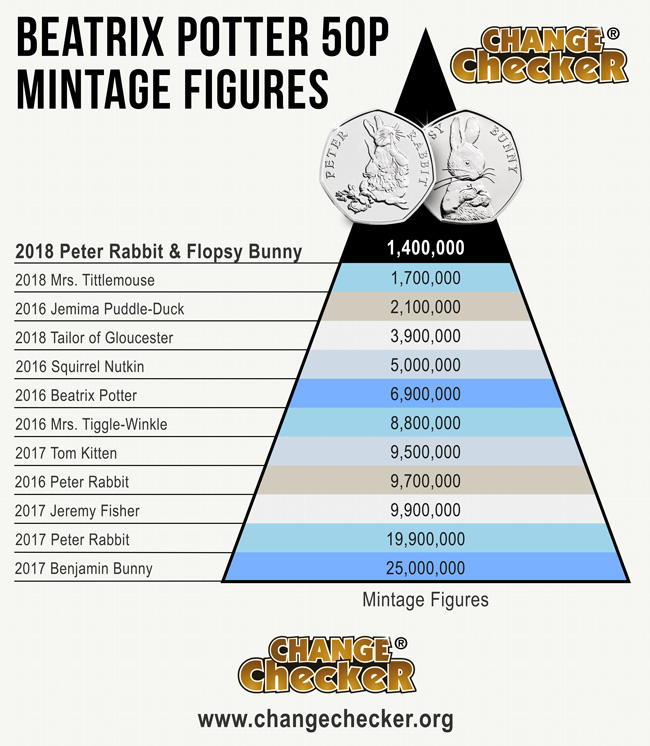
Following the release of the 2018 mintage figures, we’ve seen the 2018 Peter Rabbit and Flopsy Bunny 50ps take joint top spot on the Beatrix Potter Mintage Chart. With mintages of just 1,400,000, these coins are the rarest Beatrix Potter coins in circulation and have already proved incredibly popular with collectors!
We also saw the 2018 Mrs. Tittlemouse claim its spot on the podium, pushing Jemima Puddle-Duck – previously thought of as the rarest Beatrix Potter 50p in circulation – further down the chart, with a circulating mintage of 1,700,000.
So collectors that have held onto their 2018 Beatrix Potter 50ps will be delighted to see this! If you don’t have these coins in your collection yet, now’s the time to keep your eyes out to hunt down these sought-after 50ps.
Fill the gaps in your Beatrix Potter 50p collection
The 2020 Peter Rabbit 50p is no longer available, but you can shop our Beatrix Potter 50p range to fill the gaps in your collection >>
2020 Scarcity Index Update!
We’re excited to reveal to you the very first Scarcity Index of 2020!
The updated 50p, A-Z 10p and £2 indexes below allow you to discover how sought-after the coins in your collection really are…
This information has been compiled using data from the Change Checker Swap Centre and presented in the easy to use indexes below, with arrows to signify how many places up or down a coin has moved since the last Scarcity Index.
50p Scarcity Index
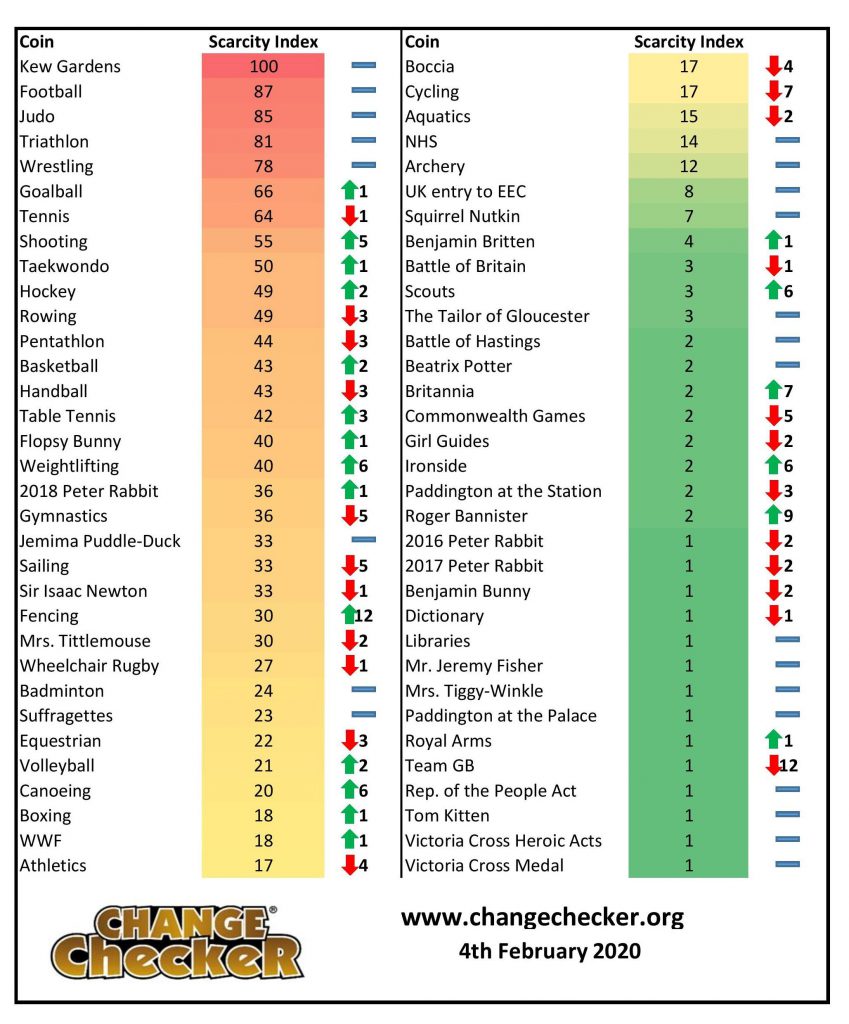
The previous Scarcity Index update saw some exciting changes to the 50p index, as we were able to include the 2018 50p coins following the release of their mintage figures.
This was great news for Change Checkers who have the 2018 Beatrix Potter 50ps in their collection, as both the Flopsy Bunny and Peter Rabbit 50ps have proved incredibly sought-after.
Despite both coins having the same mintage figure of 1,400,000, the Flopsy Bunny 50p is the most sought-after of the Beatrix Potter coins and is in fact the scarcest non-Olympic 50p coin in circulation, aside from of course the Kew Gardens 50p – the UK’s most sought-after circulation 50p.
Whilst both the Flopsy Bunny and 2018 Peter Rabbit 50ps have moved up the index one place since the last update, the other 2018 50ps haven’t fared quite so well, with the Mrs Tittlemouse and Paddington at the Station both moving down the index and the other 2018 50ps remaining unchanged.
The biggest mover on this latest Scarcity Index update goes to the Olympic Fencing 50p, which has moved up the index an incredible twelve places, following its five place drop on the previous update.
As we look forward to the Olympic Games which will be held in Tokyo later this year, perhaps we’ll see more of the Olympic 50ps increase in popularity by the next Scarcity Index update.
A-Z 10p Scarcity Index
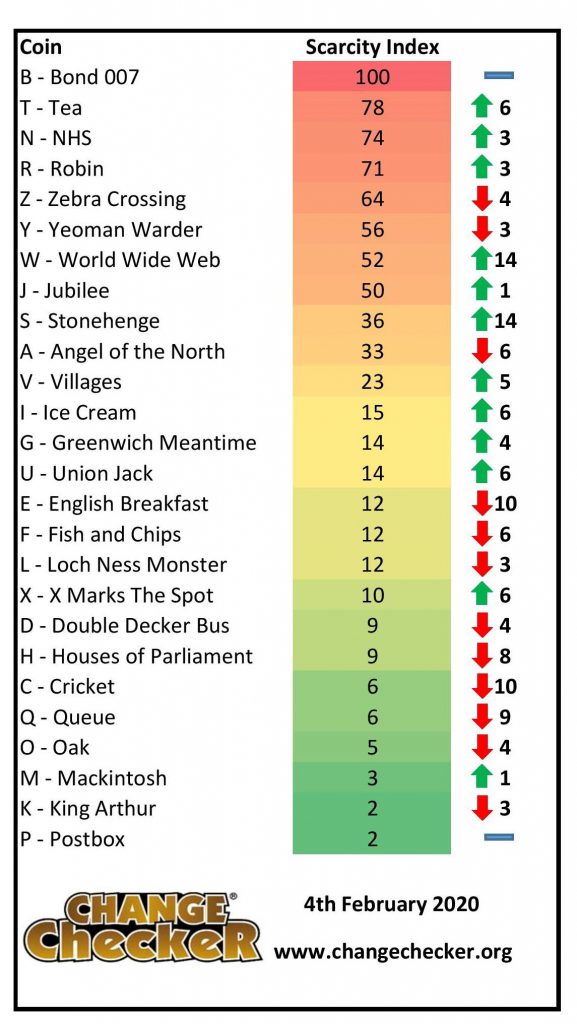
We’re used to seeing quite a bit of movement on the A-Z 10p index as these particularly tricky-to-find coins are snapped up by collectors.
Interestingly, in this latest update only the top and bottom coins have remained unchanged, with B for Bond staying on top spot as the current scarcest A-Z 10p coin in circulation.
For many, this coin seems to be a firm favourite from the A-Z of Great Britain collection which was released in 2018, so it comes as no surprise that it has found its way to the top of the list.
P for Postbox is unfortunately bottom of the pile once again, although it’s worth remembering that all of these coins are considered sought-after and collectors fortunate enough to come across just one will be considering themselves lucky.
The biggest movers on the latest 10p index update are W for World Wide Web and S for Stonehenge, which have both moved up the index by 14 places.
S for Stonehenge actually dropped by 14 places in the previous index, so this could be the coin levelling back out again.
It will be interesting to see how the index changes as more collectors come across these coins and as we await the release of the 2019 mintage figures. We currently know that 220,000 of each design entered circulation in 2018 and a further 2.1 million coins overall were released in 2019, but exact figures for individual 2019 designs are currently unknown.
£2 Scarcity Index
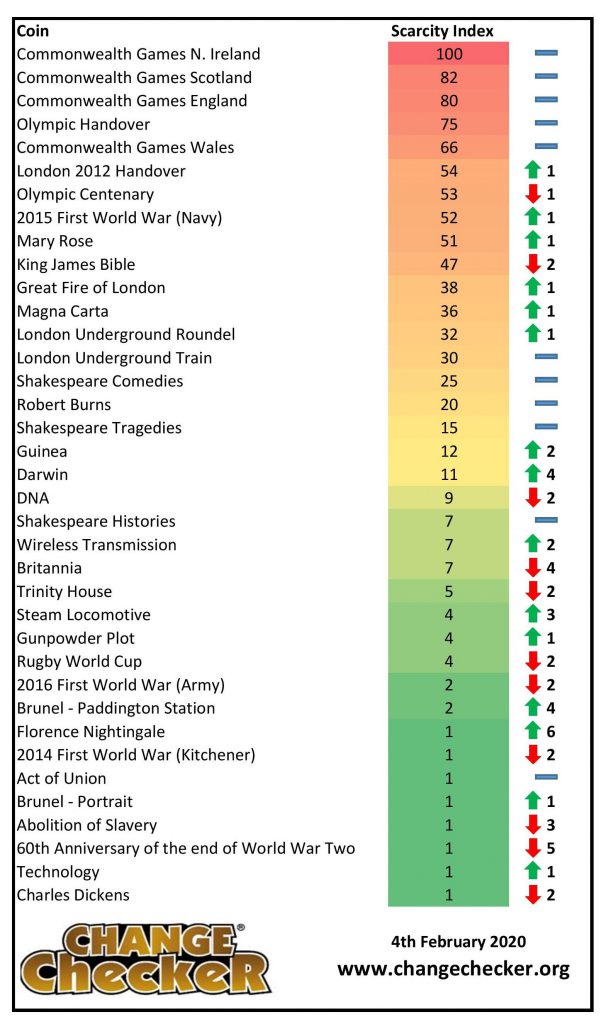
Following the 2018 mintage figure reveal, we know that no £2 coins have entered circulation since 2016, so the £2 index continues to remain fairly stable with no new coins to add to the mix.
The top five coins are unchanged since the last index and it comes as no surprise that the Commonwealth Games Northern Ireland £2 remains on the top spot, as this £2 has a mintage figure of just 485,500 and is considered incredibly sought-after amongst collectors.
All three Olympic themed £2 coins (Olympic Handover, Olympic Centenary and London 2012 Handover) also remain very close to the top of the index and I wonder if the Tokyo Olympics this year will affect the scarcity of these already very popular coins.
The biggest mover on the £2 index is the Florence Nightingale coin, which has moved up by six places, whilst the 60th Anniversary of World War Two coin has moved down by five places to the third from bottom space.
As I’m sure you’ll agree, it would be fantastic to see some new £2 coins entering circulation and how they might affect the £2 Scarcity Index. Fingers crossed they’ll be enough demand for these coins to enter circulation soon!
How your Scarcity Index works
Generally collectors have had to rely upon mintage figures to identify the scarcest coins. But they only tell part of the story. Trying to find a good quality coin from 15 – 20 years ago, even for a higher mintage issue, is much more challenging than a more recent issue, as coins become damaged over time and are ultimately removed from circulation.
Additionally, some designs are more hoarded than others by people who might not normally collect coins – the poignant First World War £2 Coin series being an example. Finally, it can be up to a couple of years before the Royal Mint eventually confirms the actual mintage for an issue.
That’s why we have combined the mintage information with two other key pieces of information.
- How many of each design are listed as “collected” by Change Checkers, indicating the relative ease of finding a particular coin.
- The number of times a design has been requested as a swap over the previous 3 months, showing the current level of collector demand.
Importantly, as new coins are released and popularity rises and falls across different designs the Scarcity Index will be updated quarterly allowing Change Checkers to track the relative performance of the UK’s circulation coins.
How much are my coins worth?
The Scarcity Index does not necessarily equate to value but it is certainly an effective indicator. For example, the Kew Gardens 50p coin commands a premium of up to 200 times face value on eBay.
You can use the 6 point guide to help you determine a more realistic value for your coins.
What about £1 Coins?
The £1 Scarcity Index has already been published for the Round £1 coins and, because they are no longer being issued, this is now set in stone.
If you’re interested in coin collecting, our Change Checker web app is completely free to use and allows users to:
– Find and identify the coins in their pocket
– Collect and track the coins they have
– Swap their spare coins with other Change Checkers

Sign up today at: www.changechecker.org/app
Rarest 50ps Revealed! 2018 Mintage Figure Update
Exciting news! The Royal Mint have revealed the latest mintage figures for 2018 coins!
Seven 50p coins entered circulation in 2018 and collectors across the nation have been debating how rare each one might be.
But now the official figures have been revealed and it looks like there are some particularly rare ones we should be looking out for…

The rarest Beatrix Potter 50ps
Collectors who have held on to their 2018 Beatrix Potter 50ps will be delighted to see that these coins have lower mintages than any of the previous Beatrix Potter coins issued in 2016 and 2017.
In fact, three out of the four Beatrix Potter 50ps released in 2018 are even rarer than the 2016 Jemima Puddle-Duck 50p – previously thought of as the rarest Beatrix Potter 50p in circulation!
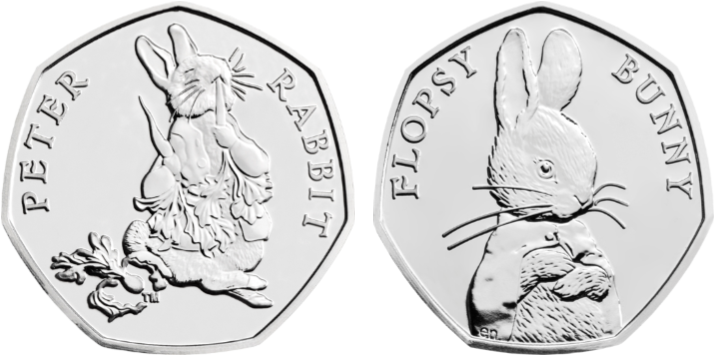
With a mintage of just 1,400,000 the 2018 Peter Rabbit and 2018 Flopsy Bunny 50ps are sure to become incredibly sought-after amongst collectors, as they take joint second spot on our mintage figure chart (which excludes Olympic 50ps).
These two coins, alongside the 2018 Mrs Tittlemouse (mintage: 1,700,000) have pushed the 2017 Sir Isaac Newton (mintage: 1,801,500) off the podium.
Whilst the 2018 Tailor of Gloucester has a slightly higher mintage at 3,900,000 the other three coins in the 2018 series have only been pipped to the post by the UK’s rarest 50p in circulation, the Kew Gardens.
With a mintage of 210,000 this 50p is considered the holy grail of change collecting and dominates the Change Checker mintage figure charts and Scarcity Index.
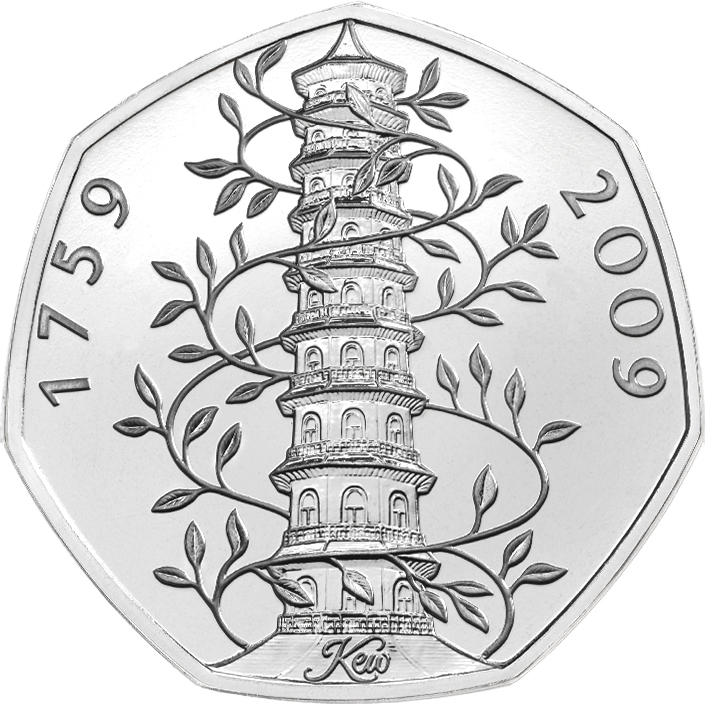
What about the Olympic 50ps?
In 2012, the release of the Olympic 50p series kick started a collecting frenzy across the nation.
It’s estimated that around 75% of these coins have been removed from circulation by collectors which means they are incredibly sought-after, especially considering these 50ps have some of the lowest mintage figures in circulation…
Many of the Olympic 50ps have a mintage less than 2,000,000 with the rarest (the Olympic Football 50p) having a mintage of just 1,125,500.

Taking these rare 50ps into consideration, the 2018 Peter Rabbit and Flopsy Bunny coins would sit in joint sixth position, below the Kew Gardens, Football, Wrestling, Judo and Triathlon 50ps.
£2 Coin Update
As well as updating the 50p mintage figures, The Royal Mint also revealed that no £2 coins were issued into circulation last year.
There have been no new £2 coins issued into circulation since 2016, which may in part be due to the introduction of the new 12-sided £1 coin in 2017.
The new definitive £2 was released in 2015, replacing the Technology £2 with a Britannia design, but for the past two years it seems there has not been enough demand to issue this coin for circulation.
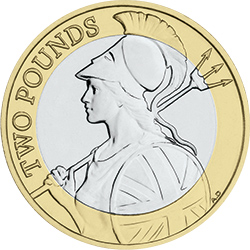
In fact, aside from the £1 coin, no new definitive coins were released at all last year, from the 1p to the £2 coin.
A-Z 10p update
Despite no definitive 10p coins entering circulation in 2018, The Royal Mint have confirmed mintage figures for the highly popular A-Z of Great Britain 10p coins.
From Angel of the North to Zebra Crossing, 26 new 10p designs were released in 2018 to celebrate what makes Britain British.

Initially, 2.6 million of these coins were released, followed by another 2.6 million later in the year.
However, up until now the individual mintages for each design had not been confirmed.
The mintage figure update now reveals that 220,000 of each design entered circulation in 2018, which makes the individual 2018 10p coins almost as rare as the Kew Gardens 50p…
Have you been lucky enough to find any of these coins in your change? It’s always exciting when new mintage figures are revealed and your realise just how rare the change in your pocket really is!
We’ll be updating the Change Checker Scarcity Index next month and it will be exciting to see how these new figures impact the index.
If you’re interested in coin collecting, our Change Checker web app is completely free to use and allows users to:
– Find and identify the coins in their pocket
– Collect and track the coins they have
– Swap their spare coins with other Change Checkers

Sign up today at: www.changechecker.org/app







